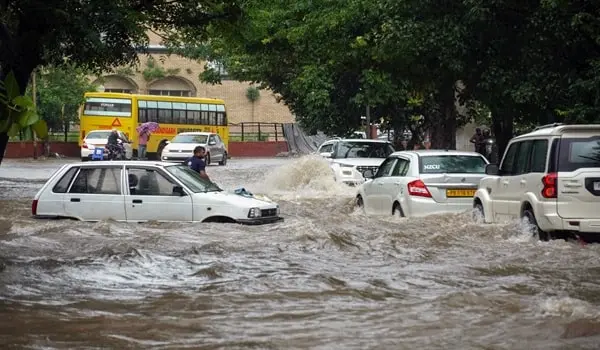Over the past week, India has entered a period of intense rainfall as the monsoon surges across the subcontinent, causing widespread destruction and forcing millions to confront the annual cycle of floods, landslides, and displacement. The India Meteorological Department (IMD) issued an extraordinary 15-day warning on July 4, highlighting the probability of extremely heavy rainfall in several states. The alert stretches from the bustling streets of Delhi to the mountainous terrains of Himachal Pradesh, impacting both urban and rural communities.
This year’s monsoon is proving more unpredictable than in recent decades. Over the past seven days alone, regions in Maharashtra, Gujarat, and Uttarakhand have reported rainfall exceeding 200 mm in single 24-hour periods, overwhelming drainage systems and sweeping away roads, vehicles, and homes. Himachal Pradesh, a state nestled in the Himalayas, has been the worst hit, with multiple landslides destroying villages, blocking highways, and leaving entire districts cut off.
The National Disaster Response Force (NDRF) has been deployed extensively in these regions, carrying out rescue operations to evacuate stranded families. Over 1,000 people have been relocated to temporary shelters as rivers such as the Yamuna and Ganga flow above danger levels, inundating low-lying settlements. Meanwhile, Mumbai, India’s financial capital, has seen suburban trains delayed or canceled due to waterlogged tracks, affecting millions of daily commuters.
Underlying this immediate crisis is the long-term issue of urban planning and climate resilience. Cities like Delhi and Mumbai are ill-prepared for rainfall of such intensity, as outdated drainage networks collapse under pressure. Environmental experts have repeatedly warned about concretization of river floodplains and wetlands, which historically absorbed excess rainwater but are now replaced by buildings and roads.
The economic cost of these rains is staggering. Early estimates by state authorities suggest damage worth over ₹4,000 crore (\$480 million) in the first week alone, including destroyed bridges, homes, farmland, and critical infrastructure. This figure is expected to rise as rains continue.
Health risks are also mounting. Stagnant water provides breeding grounds for mosquitoes, threatening outbreaks of dengue and malaria in flood-affected areas. Disrupted drinking water supplies further raise fears of waterborne diseases such as cholera.
Climate scientists point to a worrying trend: monsoon patterns are becoming increasingly erratic with climate change. The current deluge follows a record heatwave earlier in May, illustrating the growing extremes in India’s climate. According to recent IMD studies, the frequency of short, intense spells of rain has increased by over 30% in the past two decades.
Policymakers are now under pressure to act. While the central government has announced immediate relief packages and compensation for victims’ families, long-term measures such as expanding green cover, redesigning drainage systems, and relocating populations from high-risk zones are critical. If these steps are not taken, experts warn, monsoon disasters could grow deadlier with every passing year.
As rains pound the heartland and coasts alike, India’s monsoon has once again exposed the country’s vulnerability — and underscored the urgent need for sustainable solutions in the face of a changing climate.

